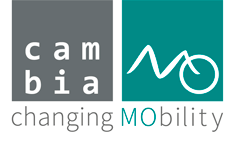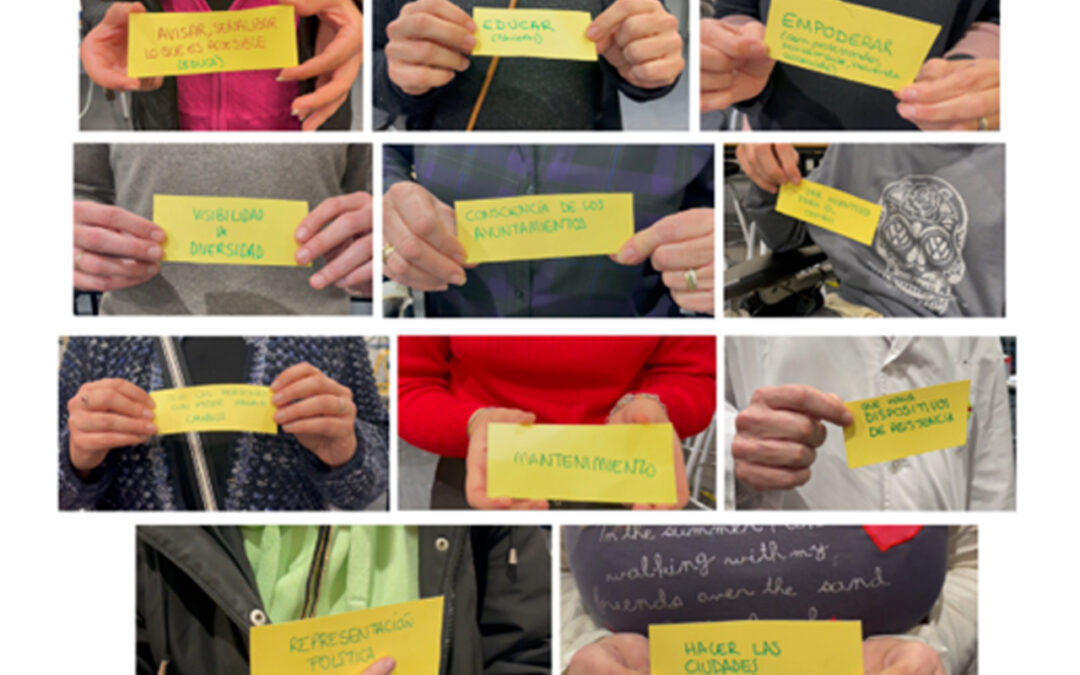cambiaMO | changing Mobility, coordinator of the EU Project INCLUSIVESPACES: DESIGNS, TOOLS & FRAMEWORKS FOR CREATING AN ACCESSIBLE & INCLUSIVE BUILT ENVIRONMENT FOR ALL, FOR NOW & FOR THE FUTURE in cooperation with the project partners organized the Transnational Community of Practice (CoP) bringing together facilitators, end-users, including people with disabilities, municipalities, NGOs, academics and transport companies from Madrid, Hamburg, Larnaka, Budapest, Penteli, and Geneva and beyond. This session provided a crucial space to reflect on the diverse experiences from each local CoP and outline key takeaways for more inclusive public spaces and built environment.
💬 Key Insights from the Discussion
Beyond Physical Accessibility
While designing accessible infrastructure is critical, true inclusivity goes beyond ramps and elevators. Emotional safety, cultural sensitivity, and inclusive communication are equally important to ensure that spaces truly serve all users, including women and girls in all their diversity and people living with disabilities.
The Power of Voluntary Participation
The most successful CoPs created a relaxed, pressure-free environment where participants could engage without constraints. Open, informal discussions allowed for deeper and more authentic conversations about accessibility challenges.
Expanding the Definition of Inclusion
The conversation emphasized that inclusivity should not only focus on physical disabilities but also consider people with sensory sensitivities, diverse gender identities, and non-visible disabilities. Addressing these broader needs will foster truly universal design approaches.
Technology as an Enabler, Not a Replacement
While digital tools improved engagement – particularly in Hamburg – participants emphasised that technology should enhance rather than replace human interaction. For example, assistive technologies should focus on empowering individuals rather than creating new barriers associated with the digital world.
Cultural Context Shapes Inclusion
The meaning of “inclusive spaces” varies widely across cultures. In some regions, concepts like gender-responsive design are still emerging, while in others, accessibility remains narrowly focused on some specific physical disability. A flexible, context-aware approach is necessary to ensure that inclusivity efforts are truly meaningful.
Inclusive Design Participatory Approach
Ensure continuous follow-up with participants, sharing updates on implemented tools and progress.
Use non-verbal and visual communication to make CoPs more accessible to diverse participants.
Engage local authorities and professionals in the conversation to drive real-world change.
Challenge traditional accessibility approaches by incorporating cultural, social, and emotional dimensions.
Inclusive spaces are not just about compliance, they are about creating environments where everyone feels they belong. The Transnational CoP made it clear that real progress requires ongoing collaboration between NGOs, academia, policymakers, industry, and grassroots communities.
What are the biggest challenges in making public spaces more inclusive in your city? Let’s continue the conversation.
#InclusiveDesign #Accessibility #CommunityOfPractice #INCLUSIVESPACE #UrbanPlanning #Socialjustice #PublicSpaces







